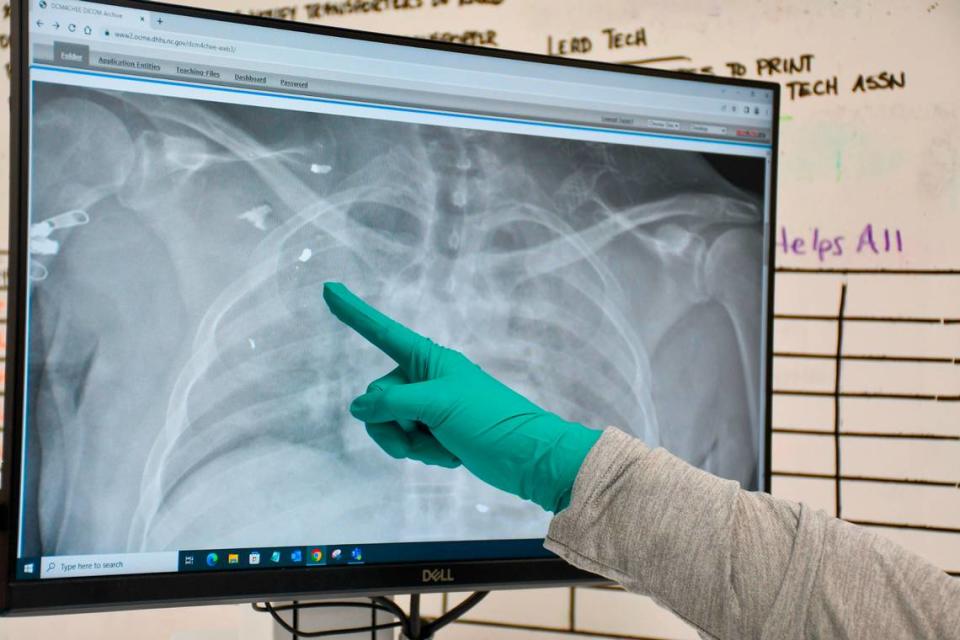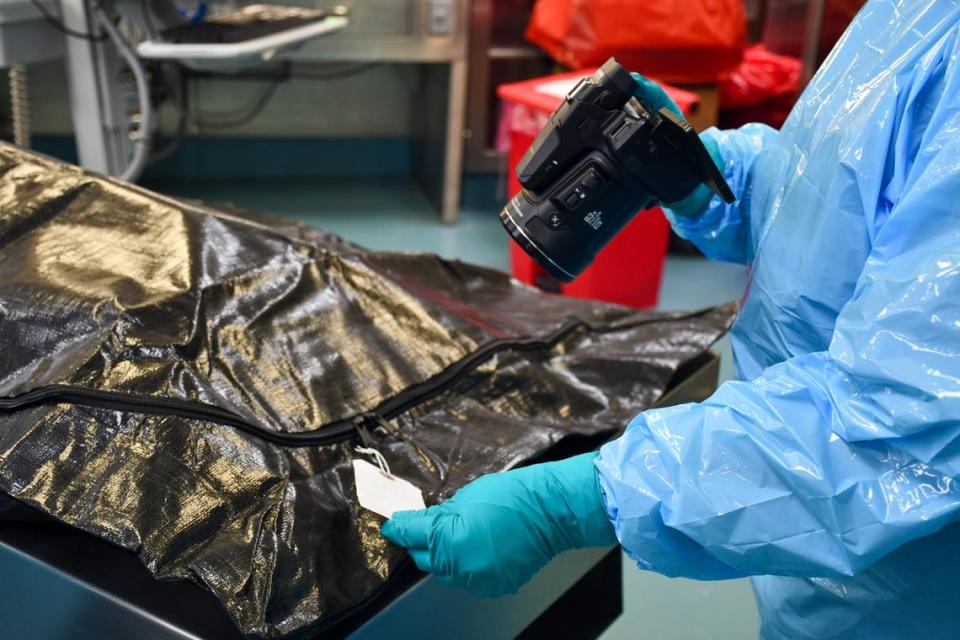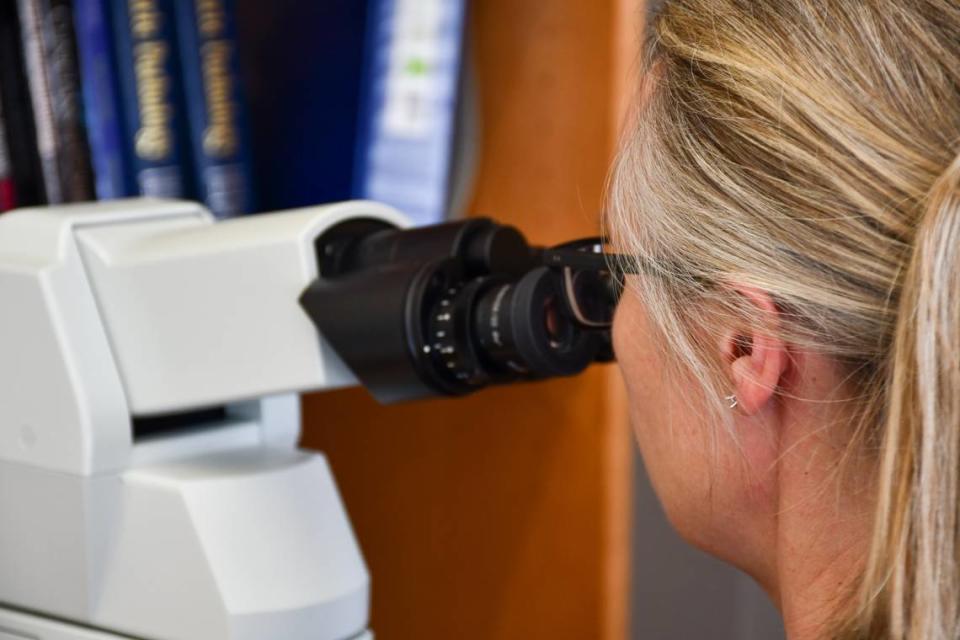What’s needed to fix autopsy crisis? Money and a strategic plan, NC budget writers say
Revisions to North Carolina’s budget call for more funding and a sweeping strategic plan to improve the state’s overwhelmed system for investigating suspicious deaths.
The spending proposals come on the heels of a recent investigation by The Charlotte Observer and The News & Observer, which found that lengthy delays in the completion of autopsy reports have led to financial crises and other problems for many grieving North Carolina families.
When people in North Carolina die unexpectedly, it usually takes more than 20 weeks for the required medical investigations to be completed. And in well over 1,000 cases since 2020, it has taken more than a year.
Those delays prevent families from getting the death certificates they need to access life insurance and funds they are entitled to inherit. It also leaves many family members wondering why their loved ones died.
Prosecutors and police, meanwhile, say the logjam has delayed charges against dangerous criminals, leaving them free to victimize others.
The system is so backlogged that Wake County is using refrigerated shipping containers to store bodies requiring autopsies.
Sen. Jim Burgin, a Harnett County Republican who co-chairs the Senate health and human services appropriations committee, said his goal is for the state to begin completing autopsy reports quickly enough that families can receive death certificates within a week.
If Burgin gets his way, the state would easily meet national standards. The national association that sets standards for medical examiners requires accredited systems to complete 90% of autopsy reports within 90 days. North Carolina completed just 24% of cases that quickly in 2022, the newspapers found.
“Is this (budget) a cure all? No,” Burgin said Wednesday. “But it’s a great first step in fixing a very complicated problem.”

A route to better?
The budget calls for the state Office of the Chief Medical Examiner to develop a strategic plan by March 2024 for improving the system “to enable the performance of timely, high-quality death investigations.”
Among other things, OCME would have to come up with proposals to reorganize the system, establish additional regional autopsy centers across the state, and recruit sufficient numbers of forensic pathologists, toxicologists and other staff.
The newspapers’ investigation found that the system is backlogged chiefly because there are too many bodies and too few pathologists and toxicologists to handle the load. Among the key causes: a shortage of forensic pathologists and an increase in opioid deaths have severely strained the system.
Four of the state’s 13 forensic pathology positions are now vacant. (The office used to have 16 positions, but the agency recently eliminated three of them to use the salary money to recruit and retain other forensic pathologists, according to the state Department of Health and Human Services, which oversees the medical examiner’s system.)
The starting annual salary for forensic pathologists in North Carolina has been about $177,500, lower than what’s offered by South Carolina, Tennessee, Kentucky and West Virginia, DHHS staff say. Nationally, the average pay for pathologists is $339,000, according to a recently released Medscape report on physician compensation.
‘What if we have a catastrophe?’
The state contracts with eight independent autopsy centers, which cover 66 counties. But 34 counties have to ship their bodies to the chief medical examiner’s office in Raleigh.
Burgin, who also co-chairs the state Senate health care committee, said that when he visited the chief medical examiner’s office two months ago, the small number of pathologists were overloaded and had already done 43 autopsies that morning.
“It’s ridiculous to have to take a body from one end of the state to another for an autopsy,” he said. “What scares me is what if we have a catastrophe somewhere - and we need that capacity?”
The state pays the regional centers just $2,800 per autopsy — less than half the average cost, according to DHHS. Officials say it has been hard to persuade additional pathology centers to perform autopsies for the state because they are paid so little.

The budget bill would increase contractor payments to $5,800, enough to cover the cost of an autopsy. In most cases, the county where a deceased person lived would have to cover about two-thirds of that cost, with the remainder paid by the state.
The state’s spending plan would also provide $2 million this fiscal year and $2 million more next year to establish a new regional autopsy center to serve nine southern Piedmont counties, including Union, Gaston, Cabarrus, Rowan and Anson.
That center would also have to be available to handle “critical medical examiner surge capacity,” the budget says.
More required autopsies
Changes within the budget would also increase the load on the state’s medical examiner system.
The budget bill would require the state to do autopsies in all cases where prosecutors suspect there was a violation of the “death by distribution” statute, which allows police to charge drug dealers with second-degree murder when buyers overdose on their drugs. It would also require toxicology screenings in all child death cases under the jurisdiction of medical examiners.

Under that plan, the state would provide $2 million each year to do autopsies in death by distribution cases. The state would also spend more than $700,000 this year — and about $165,000 next year — to do the new toxicology screenings.
In “death by distribution” and some infant death cases, prosecutors often have to wait five or more months for the completion of medical examiner investigations. That means police and prosecutors must wait to file charges, and that potentially dangerous criminals remain on the street.
State Rep. Larry Potts, a Davidson County Republican who co-chairs the House health and human services appropriations committee, said he expects lawmakers will approve the budget by Friday. The spending plan will not be a “magic pill” to solve all of the state’s autopsy problems, he said, but he’s optimistic that it will help.
“It’s a step in the healing,” he said.
A DHHS spokesperson said Wednesday the department’s staff members weren’t available to discuss the budget and are waiting to see the final version. But in an interview with The Observer earlier this year, department Secretary Kody Kinsley stressed the urgency of addressing the state’s autopsy problems.
“Bottom line, plain and simple, the medical examination system is in crisis,” he said.
North Carolina autopsy backlog brings pain, financial crises to grieving families
When medical examiner investigations are delayed in NC, so is justice

